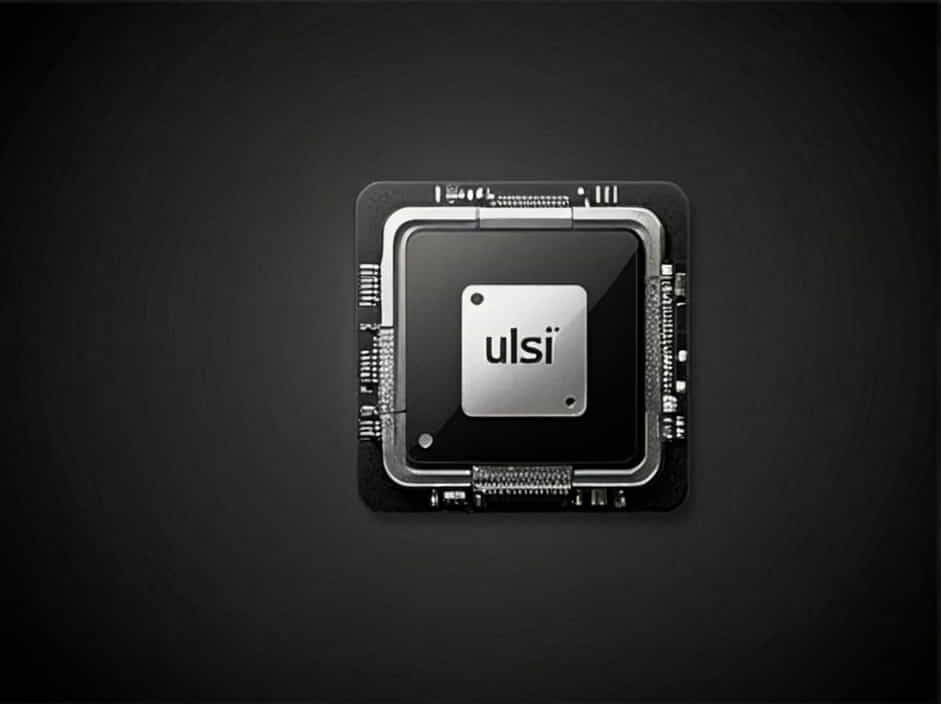Computers have gone through multiple generations of development, each marked by significant advancements in technology, processing power, and efficiency. One of the most important innovations in computer history is the ULSI (Ultra Large Scale Integration) microprocessor, which significantly improved the speed, functionality, and compactness of computing devices.
But in which generation of computers is the ULSI microprocessor used? To answer this, we must explore the evolution of computer generations and understand how ULSI technology transformed modern computing.
What is ULSI Microprocessor?
Definition of ULSI Technology
ULSI (Ultra Large Scale Integration) is a technology used to integrate millions of transistors onto a single microchip. It is an evolution of VLSI (Very Large Scale Integration), which integrated thousands to hundreds of thousands of transistors.
ULSI microprocessors played a key role in miniaturizing computers, making them faster, more efficient, and more powerful than ever before. This technology paved the way for advanced computing, artificial intelligence, and high-speed processing.
ULSI Microprocessor and Computer Generations
Computers are classified into five main generations, each defined by its hardware and processing technology:
- First Generation (1940s-1950s) – Vacuum Tubes
- Second Generation (1950s-1960s) – Transistors
- Third Generation (1960s-1970s) – Integrated Circuits (ICs)
- Fourth Generation (1970s-Present) – Microprocessors (LSI, VLSI, ULSI)
- Fifth Generation (Present & Future) – AI, Quantum Computing, ULSI and Beyond
Which Generation Uses ULSI Microprocessors?
ULSI microprocessors are primarily used in fourth and fifth-generation computers.
- Fourth-generation computers (1970s-Present) initially used LSI and VLSI microprocessors, but with advancements, ULSI chips became common.
- Fifth-generation computers (Present & Future) extensively use ULSI technology for AI, machine learning, and high-performance computing.
Thus, ULSI microprocessors belong to the fourth and fifth generations of computers.
The Fourth Generation: The Era of Microprocessors
Introduction to Fourth-Generation Computers
The fourth generation of computers began in the 1970s with the invention of microprocessors. Unlike previous generations that relied on bulky circuits and discrete components, fourth-generation computers integrated an entire CPU onto a single chip.
Development of ULSI Technology in the Fourth Generation
✔ LSI (Large Scale Integration): Integrated thousands of transistors on a chip.
✔ VLSI (Very Large Scale Integration): Integrated hundreds of thousands of transistors.
✔ ULSI (Ultra Large Scale Integration): Integrated millions of transistors, making computers faster and more efficient.
By the late 1980s and 1990s, ULSI technology allowed computers to become smaller, cheaper, and more powerful, leading to the rise of personal computers (PCs), laptops, and workstations.
Examples of ULSI Microprocessors in the Fourth Generation
- Intel 80486 (i486) Processor
- Pentium Series (Pentium, Pentium Pro, Pentium II, III, IV)
- Motorola 68040
- AMD K6 Series
These ULSI microprocessors were used in desktop computers, business servers, and gaming consoles, revolutionizing the computing industry.
The Fifth Generation: The Future of Computing
How ULSI Microprocessors Shape Fifth-Generation Computers
The fifth generation of computers started in the 21st century, characterized by:
✔ Artificial Intelligence (AI) and Machine Learning
✔ Parallel and Quantum Computing
✔ Ultra-fast Processing with ULSI and Beyond
ULSI technology continued to evolve, giving rise to multi-core processors, GPUs, and specialized AI chips. This generation focuses on high-speed computing, automation, and real-time data processing.
Examples of ULSI Microprocessors in the Fifth Generation
- Intel Core i9, AMD Ryzen 9 (High-performance CPUs)
- Apple M1, M2 Chips (Integrated AI and efficiency processing)
- NVIDIA RTX Series (Advanced Graphics and AI computation)
- Quantum Processors (IBM, Google, Intel) (Beyond ULSI computing)
These microprocessors power modern AI applications, cloud computing, and next-generation digital experiences.
Advantages of ULSI Microprocessors
1. High-Speed Performance
ULSI chips contain millions to billions of transistors, allowing faster processing and multitasking. This makes them ideal for gaming, AI, and scientific computing.
2. Compact and Energy Efficient
Unlike older large-sized computers, ULSI microprocessors make devices smaller, lighter, and more energy-efficient, enabling the production of laptops, smartphones, and tablets.
3. Cost Reduction
Mass production of ULSI chips reduces costs, making powerful computing technology affordable for businesses and consumers.
4. AI and Advanced Computing Capabilities
Modern AI-based processors use ULSI technology to handle real-time data, automation, and deep learning, powering applications in medicine, robotics, and space research.
Challenges of ULSI Microprocessors
1. Heat Dissipation Issues
With millions of transistors in a small space, ULSI microprocessors generate more heat, requiring advanced cooling systems.
2. Increasing Complexity
As processors become smaller and more powerful, manufacturing ULSI chips requires high precision and expensive fabrication technology.
3. Limitations of Silicon-Based Chips
Traditional silicon-based ULSI chips are approaching their physical limits, leading to research in nanotechnology, graphene, and quantum computing as future alternatives.
ULSI microprocessors revolutionized computing, making devices faster, smaller, and more powerful.
✔ ULSI microprocessors were first introduced in the fourth generation of computers.
✔ They continue to dominate the fifth generation, powering AI, cloud computing, and advanced applications.
✔ Despite challenges like heat issues and complexity, ULSI chips remain the foundation of modern computing.
As technology progresses, beyond-ULSI advancements in quantum computing and nanotechnology will define the next era of computing.
